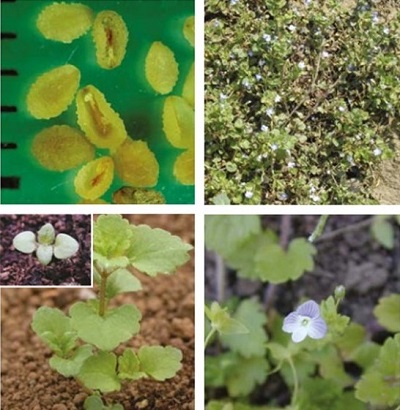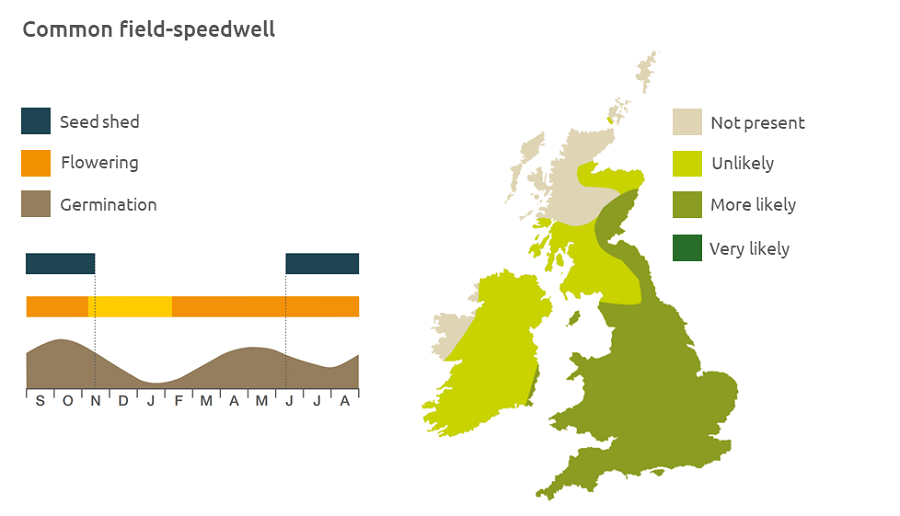- Home
- Knowledge library
- Distribution and biology of common field-speedwell in the UK
Distribution and biology of common field-speedwell in the UK
Common field-speedwell is frequently found on arable land and is particularly competitive in winter oilseed rape. Find out how to identify and control it.
Overview
Common field-speedwell (Veronica persica) is frequently found on arable land, both on fallow ground and beneath the crop canopy. It is found on autumn- and spring-sown crops probably encouraged by an increase in winter cropping. Plants can overwinter and even flower throughout the year, giving rise to two generations per season; the large seeds are probably dispersed by ants. Shoot fragments are able to regenerate.
- It is particularly competitive in winter oilseed rape
Description
It is a low sprawling hairy annual with a sturdy stem, forming loose cushions 10–40 cm across. The leaves are broadly triangular and toothed, on short stalks.
The large flowers, 9–14 mm are borne on long stalks growing from the leaf axils; the upper petals are sky blue and the lower white.
Key features
Flower: Flowers are large and predominantly sky blue.

Location and life cycle

Geographic distribution
Common field-speedwell grows up to an altitude of 350 m and prefers flat or gently sloping ground. It is a common weed of arable land and other bare soils such as disturbed or waste ground.
Soil type
It prefers damp, nutrient-rich loam soils, pH 6–8.
Seed statistics
- Seed longevity: >5 years
- Seed weight: 0.52 mg
- Seeds/flower: 7
- Seeds/plant: 50–10,000
Management
For advice on herbicides, please speak with your agronomist or adviser.
When was this information last updated?
This page is based on content from the encyclopaedia of arable weeds publication. Since it was first released in 2008, the publication has been redesigned several times but not revised. However, it remains a good foundation for general information on the distribution and biology of weeds.

